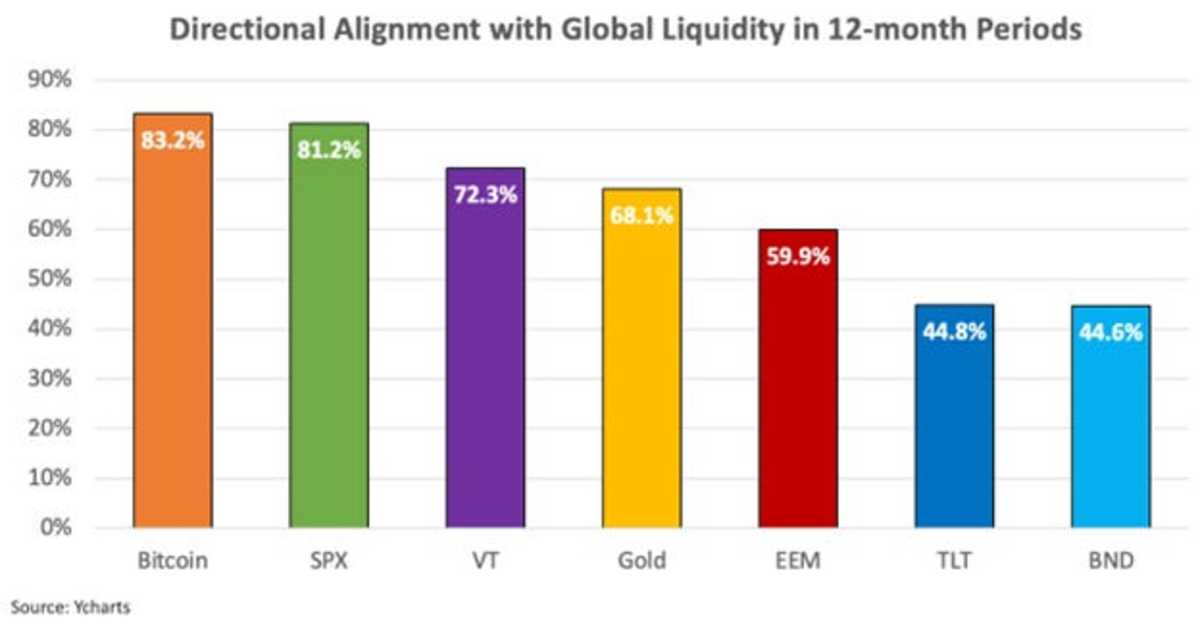
What We’re Reading: Bitcoin: A Global Liquidity Barometer

I have been captivated by the substantial rise in global liquidity throughout 2024, fueled by extensive monetary printing and debt expansion, and its effects on Bitcoin’s valuation.
Bitcoin serves as a counter to governmental monetary expansion policies; thus, its price is influenced by global liquidity levels, as illustrated in this chart.
It was insightful to read the recent study conducted by Lyn Alden and Sam Callahan, which analyzes Bitcoin’s relationship with global liquidity. This reaffirmed my perspective that increased monetary expansion attracts more people to Bitcoin, driving prices higher.
Their thorough analysis revealed that over 12-month periods, Bitcoin’s price aligns with global liquidity an impressive 83% of the time, surpassing any other major asset class and confirming Bitcoin’s unique role as a clear indicator of global liquidity trends.

The report quantified Bitcoin’s correlation with the global M2 money supply, establishing a robust overall correlation of 0.94 from May 2013 to July 2024. Bitcoin’s average rolling correlation over 12 months was 0.51, while stocks and gold also displayed moderately high correlations in the 0.4 to 0.7 range.
It’s important to note that Bitcoin’s correlation isn’t flawless. Short-term divergences can emerge due to crypto-specific incidents like exchange breaches or Ponzi scheme collapses.
Add to that, supply-demand imbalances can lead to temporary decoupling whenever Bitcoin experiences extreme overvaluation at market cycle peaks. However, despite these interruptions, the long-term association remains intact.
Currently, liquidity is reaching historic peaks, indicating that Bitcoin may soon enter a significant bull market if this correlation endures. Though I contend that no model can fully encapsulate Bitcoin’s intricacies, acknowledging its function as a monetary early warning system can provide crucial insights. If history repeats itself, Bitcoin’s signals are ringing loud and clear, suggesting a liquidity-driven surge is imminent.








